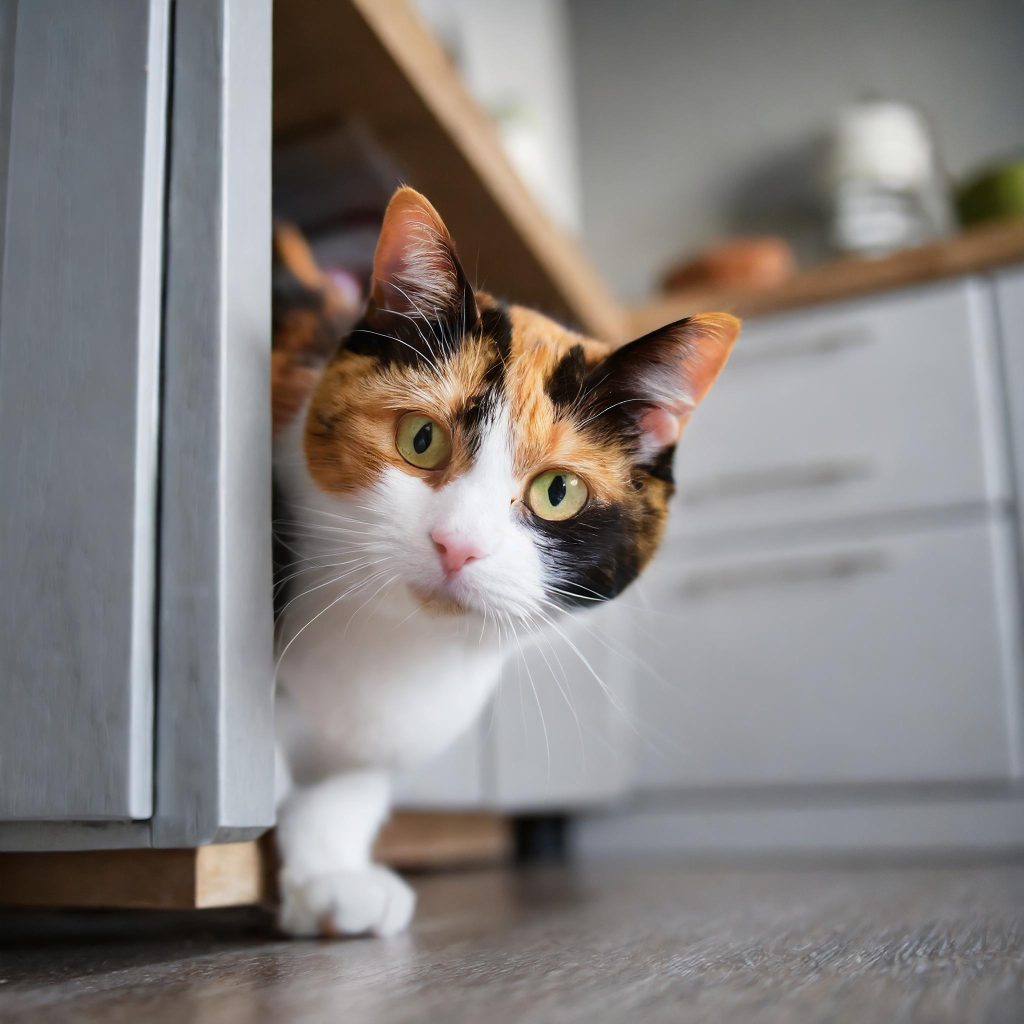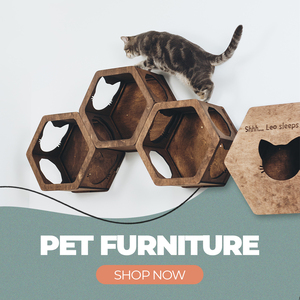As every cat parent knows, felines are bound to get themselves into some mischief. With their stealthy skills and ability to squirm into tight spaces, it seems that there’s no crevice or cupboard out of reach. And while this independent spirit is impressive, it’s up to us to make sure curiosity doesn’t get our furry friends into trouble.
To keep your cat safe, sound, and stealing hearts for years to come, take preventative measures in your home. The tips below will help you identify potential hazards and reduce the risks for your roaming roommate. With some planning, you can keep your curious kitty away from catastrophe and avoid those dreaded midnight trips to the emergency vet. Read on for insight into your cat’s tendencies and how to address safety concerns throughout your home.
Keep Tabs on Tabby’s Thinking
The first step in cat-proofing is getting inside the mind of your fur baby. Consider your cat’s typical behaviors. For example:
- If they’re drawn to small spaces, check cabinets, closets, and appliances before shutting doors.
- If they love strings, cords, and other dangly objects, keep such items out of reach and tied up.
- If they enjoy climbing to high altitudes, secure wobbly furniture and shelving.

Understanding your cat’s personality will help you identify and address specific hazards. If in doubt, err on the side of caution by removing temptation and restricting access.
Secure Hazardous Household Items
Take stock of potential poisons in your home. Safely store harsh cleaning products, automotive fluids, medications, pest control, beauty products, and other dangerous materials. Keep toilet lids closed and garbage cans covered. Even mild cleaners and soaps used on your cat’s items should be pet-safe varieties. Carefully follow all usage instructions and ventilate areas before allowing your cat back into cleaned spaces — their delicate respiratory systems are easily irritated.
Cats can easily injure themselves on sharp objects. Ensure scissors, knives, letter openers, and gardening tools are put away after use. Same goes for workshop gear like power tools, glue guns, and soldering irons. And just in case of an accident, feline first aid kits should be part of your cat-proofing plans.
Lock Up Medications
Whether prescription or over-the-counter, medications of any kind should be kept well out of your cat’s reach. Child safety locks on cabinets provide an added layer of protection. Never leave pills unattended, as just one swallowed tablet can be extremely toxic. Be diligent if you use liquid medications, as residue on spoons and such can attract your cat. Safely discard any packaging, cotton balls, syringes, or other items. And call your vet right away if you notice signs of medication ingestion.
Pick Cat-Friendly Plants
Given their penchant to chew on greenery, it’s critical to choose only pet-safe plants. Toxic plants should be kept completely out of paw’s reach. Do your research before bringing any new plants into your home, as bouquets or gift baskets may contain poisonous flowers or foliage. Some great feline-friendly options include spider plants, ponytail palms, bamboo, and catnip. You can even grow cat grass for your kitty to nibble on — they’ll love having their own “salad bar”!
Don’t Share Human Foods
Your foodie feline might sometimes get a taste of your chicken or tuna dinner, but many human foods can be dangerous for cats. Secure things like chocolate, sugar-free gum, yeast dough, onions, and garlic. Even snack foods left unattended can tempt a sourcing kitty.
Contain Cords, Strings, Etc.
From phone chargers to window treatments, your home is full of cords and strings! If your cat treats these as toys, take steps to conceal them and restrict access. Tuck wiring behind furniture or use cord covers. Wrap dangling pull-cords and tie up loose threads. Keep any sparkly tinsel, ribbon, yarn, and elastic bands out of reach. Even dental floss can be trouble — if ingested, it can cause intestinal issues. With a little care, you can indulge your cat’s instinct to stalk, hunt, and play without the stringy prey.
Check Possible Hiding Places
While it’s natural for your furry friend to seek cozy spots for catnaps, check these spaces before closing them up. Make it a habit to peek in cabinets, closets, laundry machines, and other appliances to make sure your snoozing kitty hasn’t hidden themselves in a dangerous spot. Deny access to risky areas like attics, crawl spaces, and garages that you can’t quickly and easily inspect. And remember: if you can’t find your cat, start looking in the strangest, smallest spaces first!
Extinguish Open Flames and Diffusers
With such a curious companion in your home, you can’t leave candles or essential oil diffusers unattended — from singed whiskers to major fires, there are too many risks. Even radiant heat from lamps and electronics can attract an unsuspecting kitty and lead tot trouble. It’s even a good idea to store lighters and matches out of sight.
Prevent Escape to the Outdoors
While some cats enjoy occasional outside time, uncontrolled access exposes them to many hazards. Ensure your screens are intact and secure in the window frames. Make sure all the doors fully close and can’t be bumped open. If you have a fenced-in yard that lets your cat safely revel in the sights, sounds, and smells of the outdoors, be sure gates are latched, and regularly check the perimeter fencing for gaps or damage. The best insurance is a microchip and ID tags just in case your clever cat sneaks out.
Adapt to Age-Related Needs
Senior cats can develop mobility issues that mandate changes in cat safety. Add stair steps for easier furniture access, install carpet runners for traction on slippery floors, and elevate food and water bowls. Night lights, easy-access litter boxes, and warming beds all help your aging pal stay comfortable. It’s also important to make more frequent vet visits to catch and monitor health changes that might require updates at home.
While it’s difficult to make any space 100% cat-proof, staying vigilant to note behavioral changes and proactively address risks can help prevent accidents and injuries. By identifying hazards, restricting access, and adapting your home through every life stage, you and your whiskered wonder will share many happy years together.
